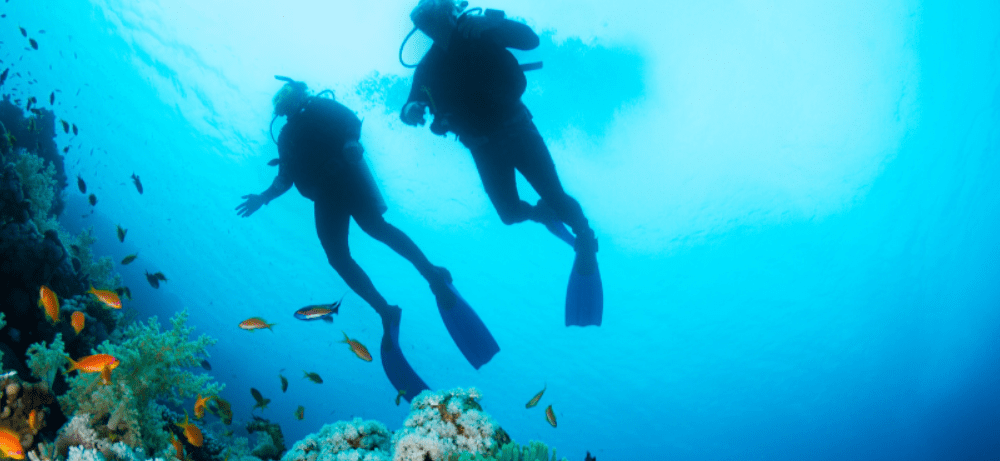How to Avoid Blurry Underwater Photos

Beginners frequently ask, “Why do my photos turn out ‘fuzzy’ when the water is clear?” The underwater environment, with its limited lighting as you descend deeper, presents considerable challenges for photographers attempting to capture well-exposed and clear photographs.
Many underwater enthusiasts can relate to their initial attempts, resulting in less-than-perfect pictures. In this guide on How to Avoid Blurry Underwater Photos, we will discuss techniques and tips to avoid blurry underwater photos, ensuring even seasoned photographers find valuable insights to enhance their underwater imaging.
Understanding the Basics
Underwater photography, while offering a unique and captivating perspective on the world beneath the waves, introduces a set of challenges unfamiliar to most photographers. Let’s understand the basics first.
The Role of Water in Image Clarity
Water significantly impacts the quality of underwater photographs. Unlike air, water’s density and movement can distort light, leading to refraction, which alters the apparent position of objects. Moreover, water absorbs colors, reducing contrast and clarity, while suspended particulates can cause backscatter, a common cause of blur in underwater photography.
Equipment Essentials
The choice of camera and accessories plays a pivotal role in capturing sharp underwater images.
Choosing the right camera
DSLRs offer high image quality and control, making them ideal for advanced photographers. Mirrorless cameras provide similar benefits but in a more compact form. For beginners, compact underwater cameras can be a cost-effective and user-friendly option.
Importance of waterproof housing
Regardless of the camera, reliable waterproof housing is essential. It must be meticulously maintained to prevent leaks, which involves regular checks of O-rings and seals.
Lens selection
Prime lenses, with their fixed focal length, often offer superior sharpness and faster apertures than zoom lenses, making them a preferred choice for underwater photography where lighting is limited.
Techniques to Enhance Clarity
Mastering specific techniques and adjusting camera settings appropriately are pivotal to enhancing clarity in underwater photography.
Camera Settings for Sharp Images
Proper camera settings are crucial to avoid blur:
- Manual vs. Autofocus: Autofocus is convenient, especially in clear water with good lighting. However, manual focus gives you control over challenging shots, such as in murky water or shooting through particulates.
- Shutter speed: Fast shutter speeds are essential to freeze motion, both your subject and your underwater movement.
- Aperture settings: A smaller aperture (higher f-number) increases the depth of field, keeping more of the scene in focus. This is particularly useful in macro photography.
- ISO considerations: A higher ISO increases light sensitivity, which is helpful in darker waters but can also increase noise. Finding the right balance is critical.
Lighting and Composition
Good lighting and composition are fundamental:
- Natural light vs. artificial lighting: While natural light can produce beautiful effects, artificial lights (strobes or video lights) can help penetrate the water’s depth, restoring colors and reducing blur.
- Positioning and angle tips: To minimize backscatter, position yourself so the light source is close to the lens and aim the light slightly away from the direct line of sight to the subject.
- Utilizing underwater terrain: Use the sea floor or coral reefs as natural tripods to stabilize your shots.
Focus Techniques for Underwater Photography
Focusing underwater requires special consideration:
- Macro vs. wide-angle focus: Macro shots require precise focusing due to shallow depth of field, while wide-angle shots benefit from setting the focus to infinity for scenes with distant subjects.
- Using manual focus: For ultimate control, especially in challenging conditions, manual focus ensures the main subject is sharp.
- Focus locking: For moving subjects, locking the focus on a predetermined spot and waiting for the subject to enter the frame can yield sharp results.
Advanced Strategies
Advanced strategies involve a deeper understanding and application of specialized techniques and equipment to overcome the challenging underwater environment.
Movement and Stabilization
Reducing camera shake is a vital component of achieving clarity in underwater photography, where the aquatic environment naturally predisposes images to blur. Effective handheld techniques, such as holding your breath during a shot and using your body as a stabilizer, can significantly reduce shaking.
For scenarios that demand absolute stillness, such as video recording or capturing long-exposure photographs, underwater tripods and stabilizers become invaluable.
Beyond equipment, mastering buoyancy control is the most critical skill for an underwater photographer. Good buoyancy control not only ensures safety and minimizes the environmental impact of a dive but also allows the photographer to hover motionless in the water.
Post-Processing Tips
Even with the best techniques, some images may need post-processing:
- Essential edits: Adjusting sharpness, contrast, and clarity can significantly improve underwater images.
- Software tools: Programs like Adobe Lightroom and Photoshop offer tools specifically useful for underwater photography, such as noise reduction and color correction.
- Balancing edits: It’s essential to find a balance in editing that enhances the photo without making it appear unnatural.
Conclusion
Underwater photography is as challenging as it is rewarding. By understanding the unique conditions underwater, choosing the right equipment, and mastering the techniques outlined, photographers can significantly improve their chances of capturing clear, sharp images beneath the surface. Practice, patience, and continuous learning are crucial to success in this fascinating field.





